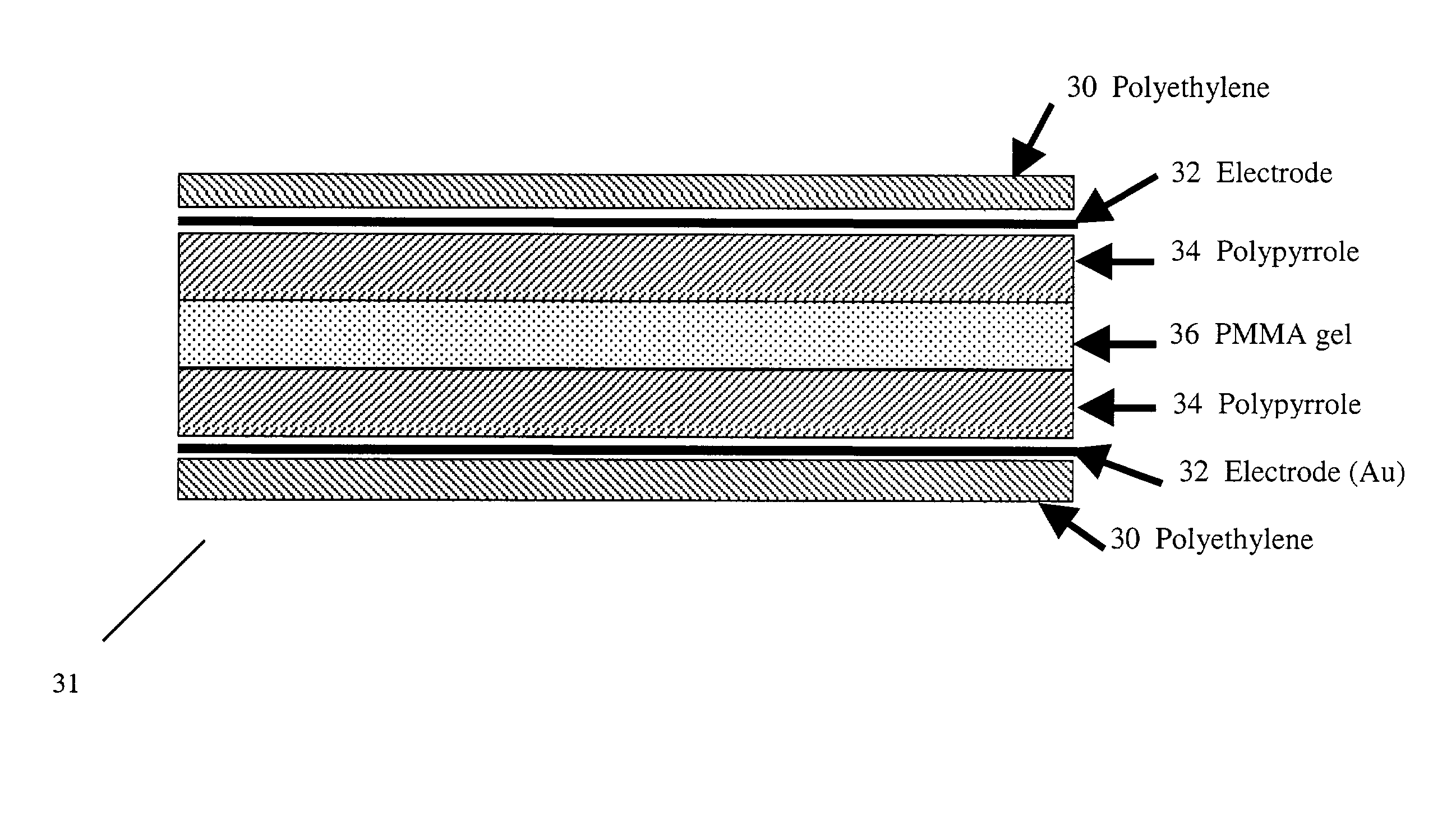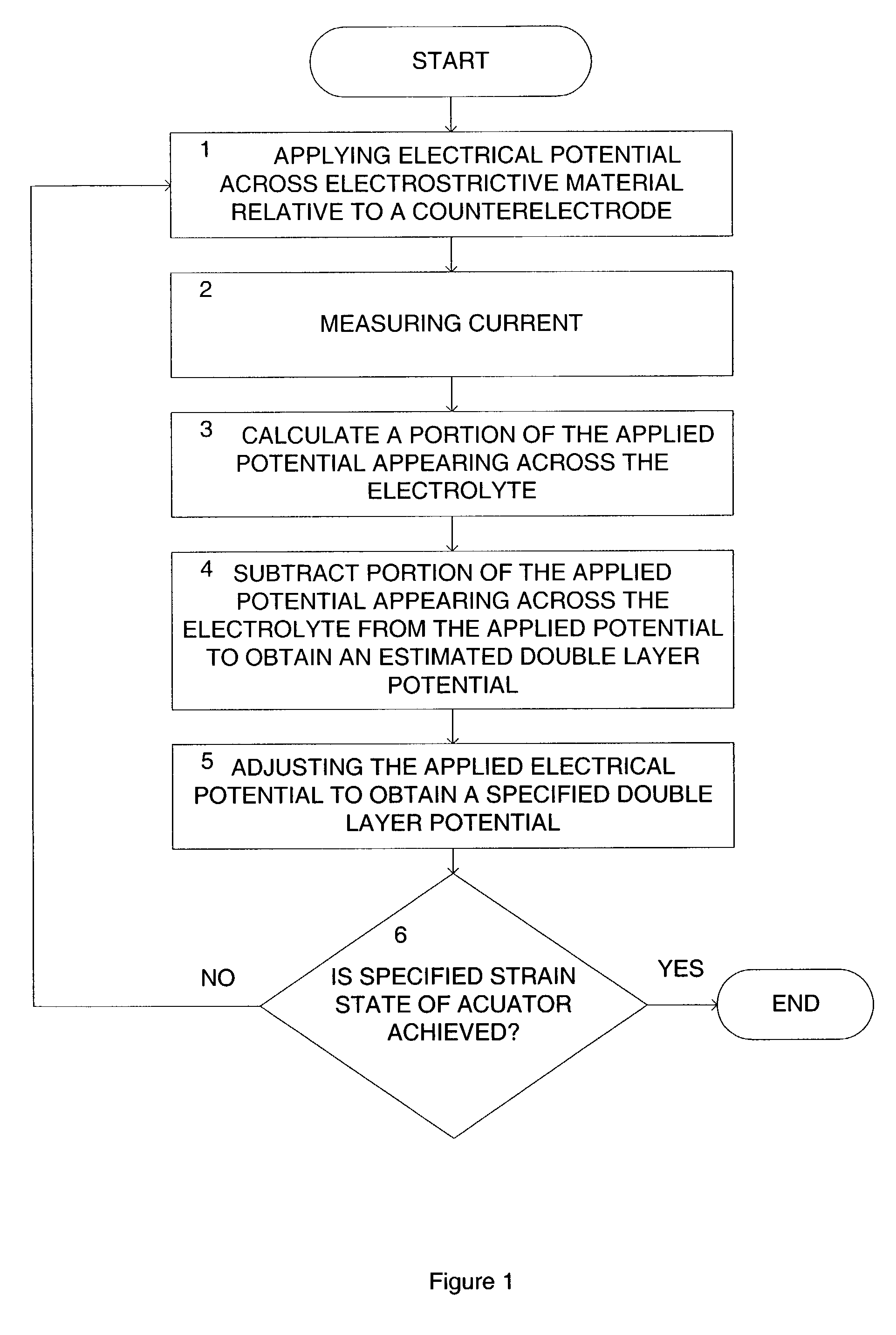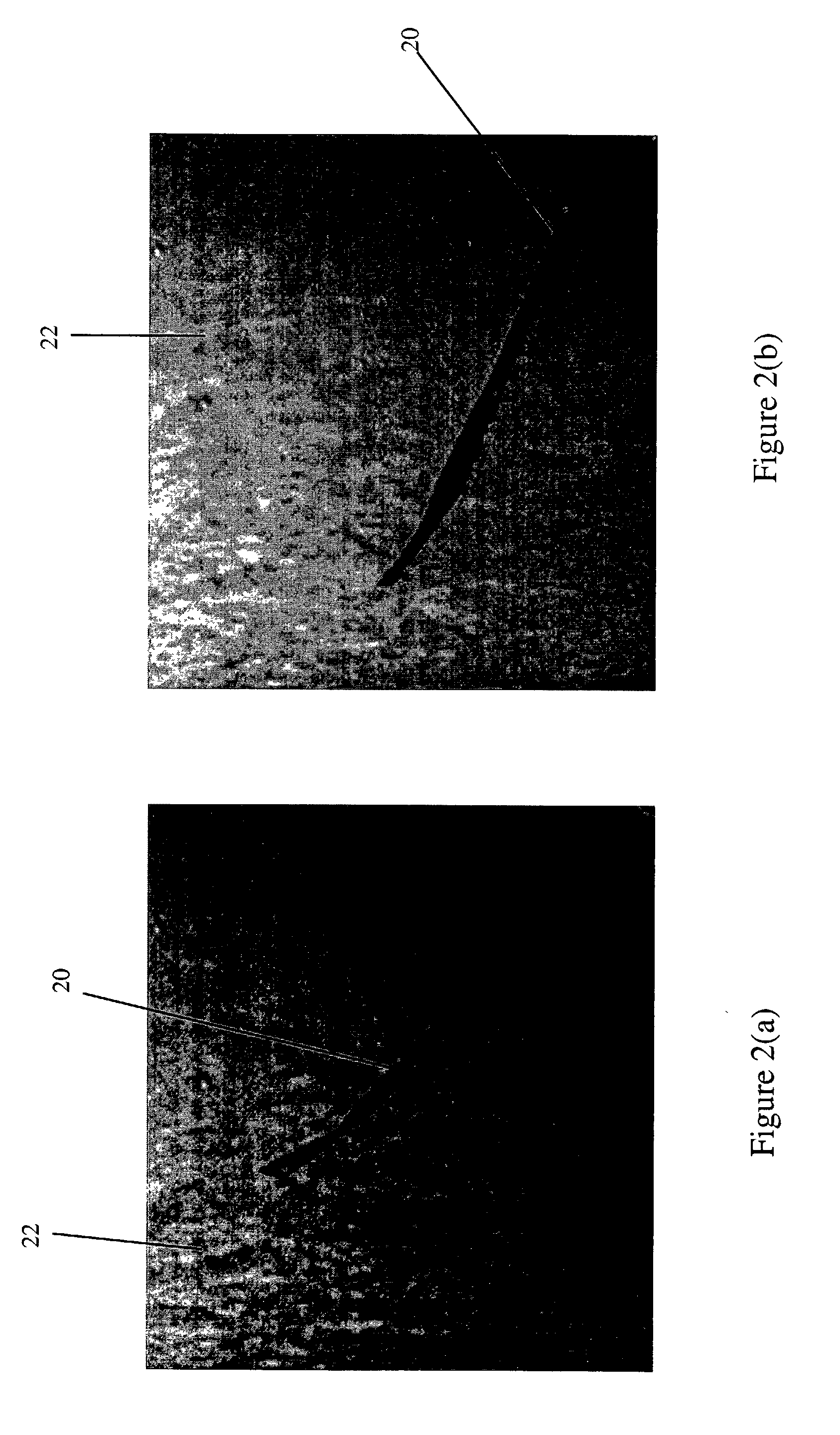High power-to-mass ratio actuator
a technology of high power-to-mass ratio and actuator, which is applied in the direction of device details, device material selection, and device details, etc., can solve the problem of being much less powerful for a given volume or mass
- Summary
- Abstract
- Description
- Claims
- Application Information
AI Technical Summary
Problems solved by technology
Method used
Image
Examples
Embodiment Construction
[0035] A system and method for activating contractile actuators based on ion migration, so as to achieve increased activation rate without significant degradation of actuator lifetimes, is presented. An increased activation rate will result in correspondingly greater opportunities for the application of contractile actuators to robotics, prosthetics and microelectromechanical systems, among others. An "activation rate" refers to the rate of electromechanical charging of the actuator, which is proportional to strain rate of the actuator and / or rate of change of force provided by the actuator. The "strain rate" is the fractional change in linear dimension per unit time.
[0036] With regards to an actuator that includes an electrolyte and an electrostrictive material, applied potential across the actuator influences the actuator's strain rate. Otero demonstrates that increasing the magnitude of the applied potential increases strain rate. Unfortunately, this increase also leads to degrad...
PUM
 Login to View More
Login to View More Abstract
Description
Claims
Application Information
 Login to View More
Login to View More - R&D
- Intellectual Property
- Life Sciences
- Materials
- Tech Scout
- Unparalleled Data Quality
- Higher Quality Content
- 60% Fewer Hallucinations
Browse by: Latest US Patents, China's latest patents, Technical Efficacy Thesaurus, Application Domain, Technology Topic, Popular Technical Reports.
© 2025 PatSnap. All rights reserved.Legal|Privacy policy|Modern Slavery Act Transparency Statement|Sitemap|About US| Contact US: help@patsnap.com



